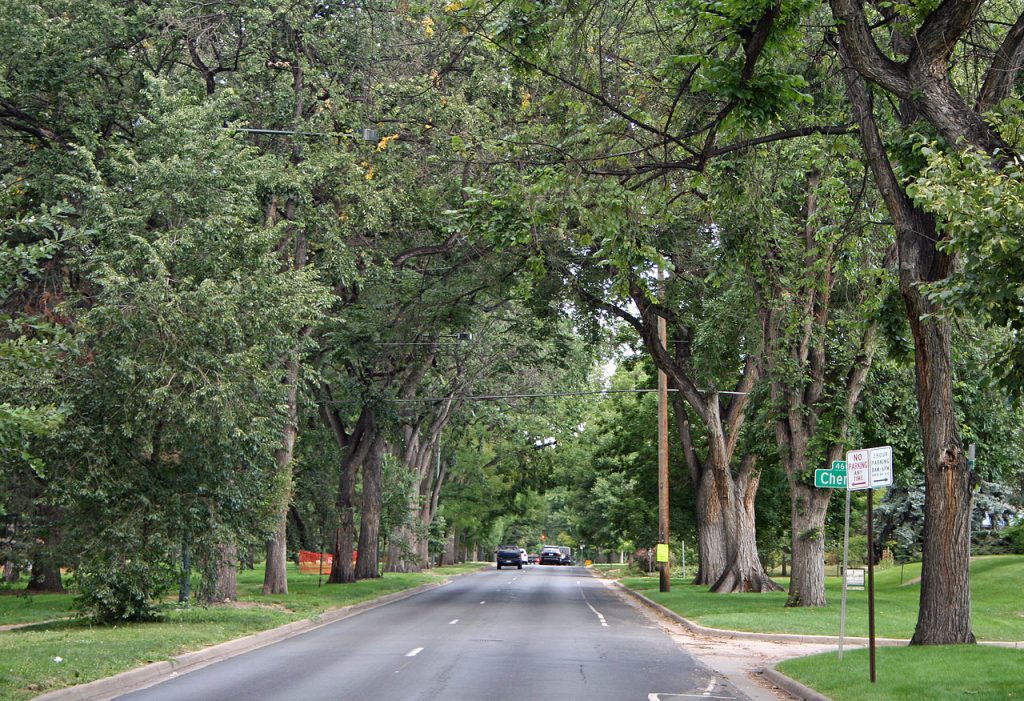CURRENT ISSUES
Denver’s East Central Area Plan
East Area Plan Projects Vision for Six Core Neighborhoods
In 2018, Denver City Council adopted an update to Blueprint Denver, a citywide land use and transportation plan. As follow-up, the City Planning Office is now creating plans for collections of neighborhoods across Denver through a process called the Neighborhood Planning Initiative. The East Central Area – which includes a high concentration of historic resources – is currently in draft form and provides an important opportunity to weigh in on how our historic buildings and neighborhoods can thrive as our city grows and changes.
The six neighborhoods of the East Central Area include North Capitol Hill (also referred to as Uptown), Capitol Hill, City Park West, City Park (also referred to as South City Park), Cheesman Park, and Congress Park. The plan also provides analysis and guidance for Colfax Avenue as the primary commercial corridor in the area.
Read the draft plan on the City’s website, where you can also check for updates or make comments.
Historic Denver’s Perspective
As a community stakeholder and advocate for Historic buildings and neighborhoods, our organization participated in the planning effort, helped to provide data regarding historic resources in the plan area, and carefully reviewed the current draft. We have expressed support for many of the recommendations in the East Central Area Plan because they clearly reflect the value our community gives to historic places and cultural touchstones, which are critical to a vibrant, inclusive and authentic Denver.
The plan is lengthy, more than 250 pages, but the emphasis on preservation is clear from the outset. The Vision & Community Priorities include preserving significant buildings, incentivizing preservation with existing and new tools, creating an adaptive reuse ordinance to make it easier to put existing buildings to new use, and supporting small and local businesses that make up our historic commercial nodes.
The tools included in the draft reflect a broadening range of methods that can protect buildings and encourage the reuse of our existing resources:
- Require the reuse of vacant institutional buildings as a default policy
- Identify the preservation of character buildings on Colfax as a desirable community benefit
- Encourage renovations and additions rather than demolition by refining zoning standards for residential areas
- Revise standards for new home construction to reduce bulk and massing
- Create attractive options for the reuse of existing homes by allowing up to one additional interior unit as well as a possible Accessory Dwelling Unit (ADU), which offers flexibility and housing diversity without demolition or the disruption of long established character
The draft plan also takes advantage of Discover Denver survey data, which has been provided through a partnership between Historic Denver and the City of Denver. Much of the East Central Area has been surveyed by the project and its volunteer teams over the last two years. The data provides guidance on areas of potential significance and possible landmarks, which through further community dialogue and process can lead to a variety of outcomes, such as new historic districts, conservation or design overlays, or the application of incentive programs for character preservation.
Areas of Concern
While there is much to applaud in the plan, Historic Denver has expressed concern about a few of the recommendations – most notably, amending the design standards for historic parkways, such as 7th Avenue Parkway. We agree that historic parkways can accommodate enhanced mobility options, such as protected bike lanes and pedestrian improvements, but we are concerned that the plan is vague about the types of changes that might be made to the design guidelines and key features of these green spaces, which tie our City Beautiful parks together and are among the most defining and important elements of our city.
Other key strategies will require refinement and community engagement to ensure that the outcomes meet expectations. Historic Denver is very interested in working to further define criteria and standards for the application of the new tools included in the plan, and to ensure that preservation remains a priority.

